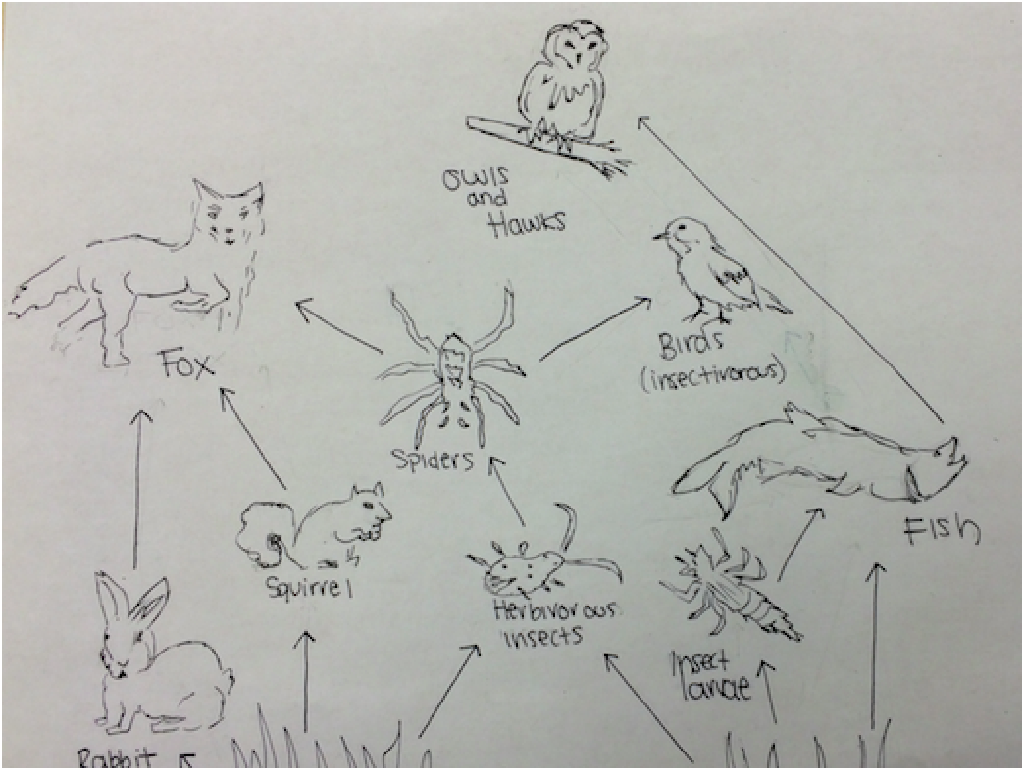Ancient Egyptian Religion
Subject: Social studies
Grade: Seventh grade
Topic: Ancient Egypt And Kush
Please LOG IN to download the presentation. Access is available to registered users only.
View More Content
Exploring Ancient Egyptian Religion
– Unveiling Ancient Egyptian beliefs
– Polytheistic beliefs with gods for various aspects of life
– Religion’s impact on society
– Guided daily life, governance, and architecture, e.g., pyramids as tombs for pharaohs
– Overview of today’s lesson
– Learning objectives
– Students will identify key gods, understand religious practices, and recognize religion’s societal role
|
This slide introduces students to the complex and fascinating world of Ancient Egyptian religion, which was integral to almost every aspect of daily life. Emphasize the polytheistic nature of their beliefs, with a pantheon of gods associated with natural and societal elements. Highlight how religion influenced governance, law, and culture, including monumental architecture like the pyramids. Today’s lesson will cover the main gods, such as Ra, Isis, and Anubis, the significance of the afterlife, and religious ceremonies. By the end of the lesson, students should be able to recognize the importance of religion in shaping Ancient Egyptian society and its lasting legacy.
Gods and Goddesses of Ancient Egypt
– Overview of Egyptian deities
– Meet the diverse pantheon from Ra to Anubis
– Traits of Ra, Isis, Osiris, Anubis
– Ra: sun god, Isis: magic and motherhood, Osiris: afterlife, Anubis: mummification
– Domains of major gods
– Gods had specific areas of influence, like life, death, and the natural world
– Understanding polytheism
– Polytheism: belief in and worship of multiple gods, each with unique roles
|
This slide introduces students to the rich pantheon of Ancient Egyptian religion, highlighting the importance of gods and goddesses in daily life and the afterlife. Ra was revered as the sun god, Isis was associated with magic and motherhood, Osiris ruled over the afterlife, and Anubis was the god of mummification. Each deity had a domain they influenced, reflecting the Egyptians’ attempts to understand and explain the forces of nature and existence. Polytheism was central to their culture, with each god playing a specific role in the cosmic order. Encourage students to compare this with modern religious practices to foster a deeper understanding of ancient beliefs.
Mythology and Beliefs in Ancient Egypt
– Creation myths of gods and the world
– Stories explaining the origins of the universe and deities
– Myths’ role in daily life and rule
– Myths influenced daily activities and the pharaoh’s authority
– The afterlife and mummification
– Mummification preserved bodies for life after death
– The journey of souls to the Duat
– Duat: the realm souls traverse to reach the afterlife
|
This slide delves into the rich mythology and religious beliefs of Ancient Egypt, which were integral to their culture. The creation myths provided explanations for the existence of the world and the pantheon of gods they worshipped. These myths were not just stories but were deeply embedded in the daily lives of Egyptians and legitimized the pharaoh’s rule as a divine right. The concept of the afterlife was central to Egyptian religion, with mummification serving as a preparation for the deceased’s journey to the Duat, a spiritual realm they believed one must navigate to reach the afterlife. Discuss the significance of these beliefs and how they shaped the civilization’s practices, from burial rituals to governance.
Temples and Worship in Ancient Egypt
– Temples: homes of the gods
– Temples were sacred spaces for deities, central to community worship.
– Roles of priests and priestesses
– They performed rituals, maintained temples, and communicated with deities.
– Significance of religious festivals
– Festivals honored gods with processions and offerings, uniting communities.
– Ceremonies and daily rituals
– Daily temple rituals ensured divine favor and order in society.
|
This slide explores the religious structures and practices of Ancient Egypt. Temples were not just buildings but were considered the actual houses where gods resided. Priests and priestesses played a crucial role in maintaining these sacred spaces and performing necessary rituals to appease the gods. Festivals and ceremonies were pivotal in strengthening the bond between the divine and the people, often involving elaborate processions and offerings. Understanding these aspects of Egyptian religion provides insight into their values and societal structure. Encourage students to compare these practices with modern religious observances to foster a deeper understanding.
Symbols and Artifacts in Ancient Egyptian Religion
– Deciphering hieroglyphs
– Hieroglyphs were used in religious texts and believed to be the language of the gods.
– Significance of sacred objects
– Sacred objects like the Ankh symbolized life; the Scarab represented rebirth; the Eye of Horus was for protection.
– Faith in art and architecture
– Temples and monuments reflected the Egyptians’ religious beliefs and practices.
– The Ankh, Scarab, and Eye of Horus
– Explore the meaning behind these powerful symbols and their role in rituals.
|
This slide introduces students to the rich symbolic language and artifacts of Ancient Egyptian religion. Hieroglyphs were more than just a writing system; they were considered sacred, believed to be the language of the gods, and were used extensively in religious texts and inscriptions. Sacred objects such as the Ankh, Scarab, and Eye of Horus played a central role in religious ceremonies and were thought to hold magical properties. Art and architecture were also deeply intertwined with religious expression, with temples and monuments serving as places of worship and reflecting the Egyptians’ beliefs. Encourage students to think about how symbols convey meaning and how artifacts can provide insight into the cultural and religious practices of a civilization.
The Pharaoh: ‘God-King’ of Ancient Egypt
– Pharaoh’s divine right to rule
– Pharaohs were considered chosen by the gods to serve as their earthly representative.
– Pharaoh as religious figurehead
– Pharaohs performed sacred rituals and were central to Egyptian worship.
– Akhenaten’s devotion to Aten
– Akhenaten famously promoted the worship of the sun disk, Aten, above other gods.
– Pharaohs depicted as gods
– Pharaohs were often equated with gods in Egyptian art and texts.
|
This slide explores the concept of the Pharaoh as both a political and religious leader, believed to possess a divine right to rule. As a deity, the Pharaoh was integral to the state religion, performing rituals and being worshipped by the people. Akhenaten is a notable example, as he shifted the religious focus to the worship of Aten, challenging the traditional polytheistic beliefs of the time. Highlight how the Pharaohs were often immortalized as gods through monuments and inscriptions, reinforcing their divine status. Encourage students to consider the implications of such a powerful role and how it shaped the culture and governance of Ancient Egypt.
Class Activity: Create Your God
– Design an Egyptian deity
– Choose domain, symbols, and powers
– Present your deity to the class
– Explain their societal role
– How would your god influence daily life, rituals, or events in Ancient Egypt?
|
This activity encourages creativity and understanding of the Ancient Egyptian religion by having students design their own god or goddess. They should think about what aspect of life or nature their deity would oversee (domain), what objects or animals would represent them (symbols), and what special abilities they would possess (powers). After designing their deity, students will present their creation to the class, explaining how their god or goddess would fit into the pantheon of Ancient Egyptian deities and their influence on society, such as in agriculture, war, or the afterlife. For the teacher: Prepare a list of domains, symbols, and powers to help guide students who may need inspiration. Consider grouping students for this activity to encourage collaboration. Have a discussion afterward about the common themes that appear in their deities and how this reflects the values and concerns of Ancient Egyptian culture.
Reflecting on Ancient Egyptian Religion
– Recap of Egyptian religion
– Overview of gods, practices, and afterlife concepts
– Religion’s role in culture
– Religious festivals and temple rituals shaped society
– Daily life and religious influence
– Prayers, offerings, and moral codes guided daily routines
– Lessons from ancient beliefs
– Studying past beliefs highlights changes and constants in human culture
|
As we conclude our exploration of Ancient Egyptian religion, it’s important to reflect on how deeply religion was woven into the fabric of their society. From the pantheon of gods to the concept of the afterlife, these beliefs shaped not just the grand monuments we associate with Egypt, but also the everyday lives of its people. Religion influenced governance, law, and even the calendar with its schedule of festivals. By studying these ancient belief systems, students can gain insight into how religion can drive cultural development and personal behavior. This reflection can also provide a valuable perspective on the continuity and evolution of human spirituality and social structures over time.






